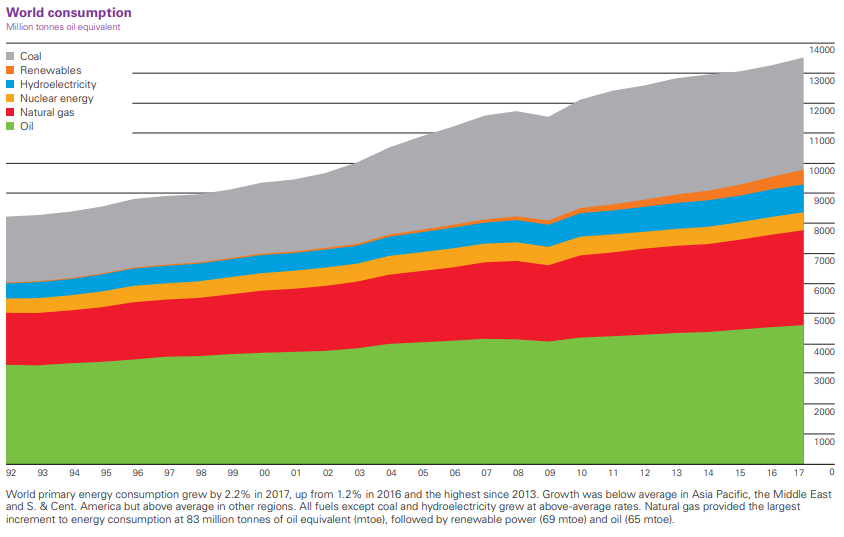BP's annual review of energy production and consumption is out. And as usual, it's a sobering reminder of where we've been and where we are headed. We previously discussed the concept of "fair share" of CO2, and how much each person gets to consume in a world that is headed towards 1990 levels of CO2 emission. I had dinner this week with a friend that though the argument too extreme. But in fact, the tipping point is real, and the tipping point must be addressed in the next 20 years if not today. There's nothing extreme about the math at all if you believe we're in crisis. And, yes, air travel doesn't really exist in a world where we all emit equally unless the air travel is achieved via renewables. The math really is that simple.
The BP report mostly shows trends that we'd expect as the world converges to their "fair share" per-capita figure: China and India will continue to emit more (since they are well below their fair share per-capita figure), while the US and EU will continue to emit less (since they are well above their fair share per-capita figure). Along the way the policy makers will have to debate how a nation's GDP productivity might skew the real fair share number. But the trends are clear.
Most sobering, however, is the graph below:
If you think we're well on our way to renewables fixing everything, it's not even close. Eyeballing, in 2 years, consumption has gone up 3.6%. In the last 17 years it has gone up 45%. Both confirm trends of just under 2% YoY growth in consumption. Given the consumption increase baseline of 2%, that suggests that the share of renewables must grow at a rate far beyond 2% to keep up with rising demand and replace fossil in a timely manner. That's easy to do in the beginning, extremely hard to do in the end.
BP’s caption indicates world consumption grew by 2.2% in 2017—about 297 mtoe (million tones oil equivalent). And renewables were 69 mtoe they note—about 23% of the overall growth of 297 mtoe. But just 0.41% of the total growth. In other words, world demand grew by 2.2%, but renewables provided just 0.41% of that growth. The rest came from fossil.
And as BP indicated, the world has gone back to using increasing amounts of coal. That has been driven by both China and India as they seek to satisfy their growing demand for energy as their populations expand into the global middle class..
